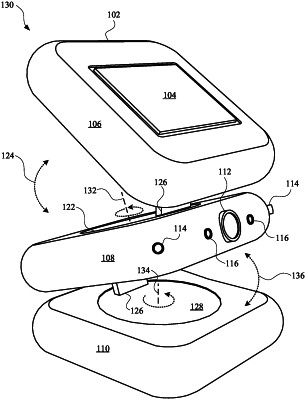| CPC G10L 15/22 (2013.01) [B25J 11/0005 (2013.01); G05D 1/0246 (2013.01)] | 13 Claims |

|
1. A method implemented by one or more processors of a computing device, comprising:
determining, based on processing of audio data detected via a plurality of microphones of the computing device:
that a user has provided a spoken utterance that is directed to an automated assistant operating at least in part on the computing device, and
a location of the user, that provided the spoken utterance, relative to the computing device,
wherein the plurality of microphones are attached to a given housing enclosure of the computing device;
in response to determining that the user has provided the spoken utterance:
actuating a motor, included in the given housing enclosure with the plurality of microphones, to cause an orientation, of a display panel of the computing device, to be directed toward the determined location of the user,
wherein the display panel is in a display panel housing enclosure,
wherein the display panel housing enclosure is separate from the given housing enclosure, but is coupled to the given housing enclosure, and
wherein actuation of the motor, included in the given housing enclosure, causes rotation of the display panel housing enclosure about an axis of the motor and via the coupling to the given housing enclosure;
causing graphical content, generated by the automated assistant and that is responsive to the spoken utterance, to be rendered by the display panel of the computing device,
wherein the graphical content is rendered by the display panel at least after the orientation is directed toward the determined location of the user;
identifying a distance condition in dependence on whether a response to the spoken utterance includes any graphical content;
determining that the location of the user fails to satisfy the distance condition relative to the computing device; and
actuating one or more wheel motors, that each drive one or more corresponding wheels that are coupled to the given housing enclosure, to cause the computing device to navigate closer to the user,
wherein actuating the one or more wheel motors to cause the computing device to navigate closer to the user is further in response to determining that the location fails to satisfy the distance condition.
|